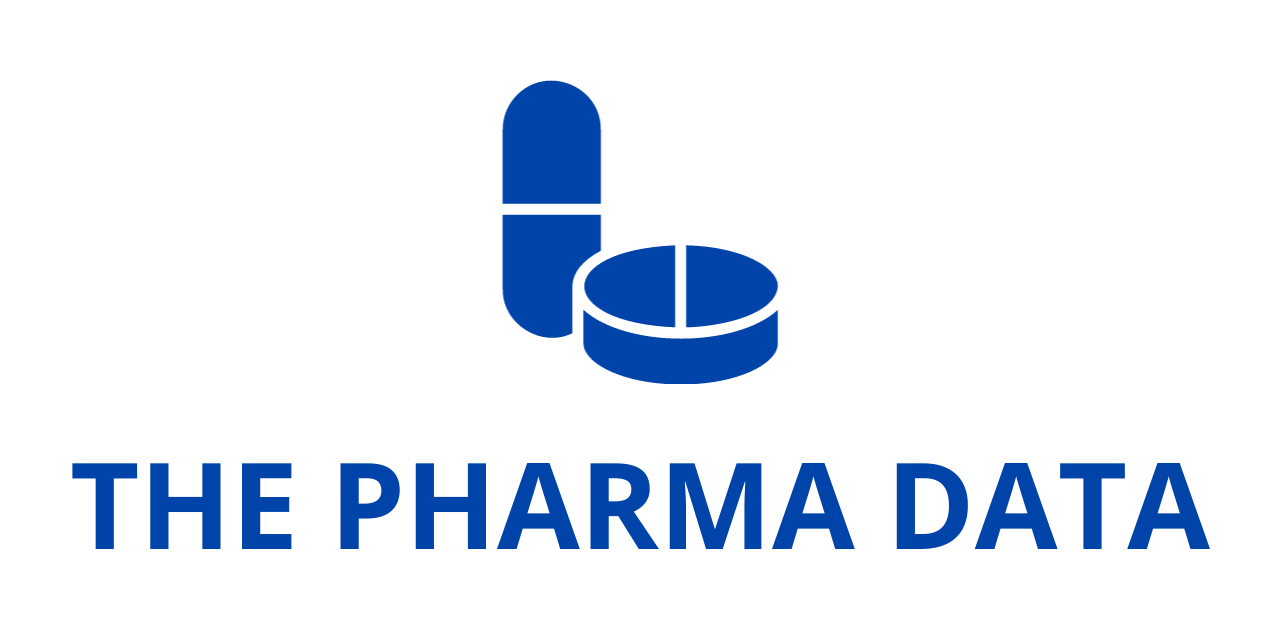
Roche’s Vabysmo Reinforces Long-Term Benefits in Wet Age-Related Macular Degeneration and Shows Strong Gains in Polypoidal Choroidal Vasculopathy
Paris, France – At the 25th annual Euretina Congress, one of the world’s most important scientific gatherings focused on retinal disease, Roche (SIX: RO, ROG; OTCQX: RHHBY) presented new data underscoring the clinical performance of its ophthalmology therapy Vabysmo® (faricimab). The results come from two major clinical programs: the AVONELLE-X study, an extension trial that assessed the therapy’s long-term outcomes in patients with neovascular or “wet” age-related macular degeneration (nAMD), and the SALWEEN study, a dedicated investigation into Vabysmo’s role in treating polypoidal choroidal vasculopathy (PCV), a particularly challenging subtype of nAMD prevalent in Asian populations.
Together, these findings expand the clinical evidence supporting Vabysmo, which has already emerged as a cornerstone therapy in the management of retinal vascular diseases since its first regulatory approvals in 2022. The data reinforce Vabysmo’s strengths in three key domains: efficacy, safety, and durability—elements that are essential to managing progressive vision-threatening conditions.
Key Highlights from the New Data
- Four-Year Outcomes in nAMD (AVONELLE-X): Vision stability and anatomical benefits were maintained through four years of treatment. Nearly 80% of patients were able to extend treatment intervals to once every three or four months, supporting its long-term durability.
- One-Year Results in PCV (SALWEEN): Patients achieved a clinically meaningful vision gain of nearly nine letters, with more than half extending dosing to every five months. Over 60% of polypoidal lesions fully resolved, and 86% showed inactivation.
- Safety Profile: Across both studies, Vabysmo was well tolerated, with no new safety concerns, and findings were consistent with its established profile in nAMD.
- Global Reach: Vabysmo is now approved in more than 100 countries for nAMD and diabetic macular edema (DME), and in over 60 countries for macular edema following retinal vein occlusion (RVO). More than eight million doses have been distributed worldwide.
The Significance of the Findings
Levi Garraway, MD, PhD, Roche’s Chief Medical Officer and Head of Global Product Development, emphasized the broader impact of these results:
“The robust SALWEEN findings in PCV highlight Vabysmo’s potential to deliver clinically meaningful improvements and help mitigate vision loss. Roche Alongside the long-term AVONELLE-X results in nAMD, these findings support our mission to develop and deliver impactful medicines for people with difficult-to-treat eye diseases.”
This dual announcement is particularly important because it illustrates both the durability of treatment effect in the long-term management of nAMD and the emerging role of Vabysmo in PCV, a subtype for which optimal treatment strategies remain a pressing clinical need in Asia.
Understanding the SALWEEN Study
The SALWEEN trial was a Phase IIIb/IV multicenter, open-label, single-arm study that enrolled 135 patients aged 50 years or older across nine Asian markets, including China, Japan, India, Singapore, South Korea, and others.
Study Design
- Patients received four loading doses of Vabysmo (6 mg) over 12 weeks.
- After loading, treatment intervals were individualized based on disease activity, with dosing scheduled every 8, 12, or 16 weeks.
- From weeks 44 to 104, patients followed a personalized treat-and-extend regimen, with the possibility of stretching intervals to as long as 20 weeks.
- The primary endpoint was improvement in best-corrected visual acuity (BCVA), averaged across weeks 40, 44, and 48.
Outcomes
- Vision Gains: Patients achieved an average +8.9 letter improvement in BCVA at one year, a gain that is widely considered clinically meaningful in ophthalmology.
- Extended Dosing: More than 50% of participants were maintained on dosing intervals of five months by the end of year one.
- Polypoidal Lesion Resolution: Over 60% of patients experienced complete regression of polypoidal lesions, while 86% showed lesion inactivation, reflecting a strong anatomical response.
- Safety: The safety profile aligned with prior experience in nAMD, with no unexpected signals.
These findings are particularly impactful because PCV has historically been difficult to treat. It involves abnormal, aneurysm-like bulges in blood vessels beneath the retina, Roche which are prone to leakage and bleeding. While anti-VEGF therapies have improved outcomes, recurrence rates and treatment burden remain high. Vabysmo’s dual-target mechanism appears to provide an additional layer of benefit.
Insights from the AVONELLE-X Extension Study
The AVONELLE-X study was Roche designed as a two-year extension of Roche’s pivotal Phase III TENAYA and LUCERNE trials, which had already demonstrated Vabysmo’s efficacy compared to aflibercept in nAMD.
Study Design
- Over 1,000 patients who completed TENAYA or LUCERNE were enrolled.
- All participants received Vabysmo on a treat-and-extend regimen, with treatment intervals individualized based on disease activity and visual outcomes.
- The study followed patients for two additional years, building on the original two-year trials for a total of four years of observation.
Outcomes
- Sustained Vision: Visual acuity remained stable across four years, confirming that long-term therapy can preserve vision gains.
- Durable Dosing Intervals: Nearly 80% of patients were able to maintain dosing intervals of 12 to 16 weeks, highlighting reduced treatment burden.
- Stable Anatomy: Anatomic improvements seen in TENAYA and LUCERNE were maintained, with no evidence of disease rebound.
- Safety: Long-term safety findings were consistent with previous trials, with no new risks emerging.
Taken together, these results reinforce Roche Vabysmo’s role as a durable, flexible therapy that helps reduce the need for frequent injections while maintaining efficacy.
Context: The Burden of nAMD and PCV
Neovascular AMD (nAMD)
Age-related macular degeneration (AMD) is a chronic, progressive eye disease that affects the macula—the Roche central part of the retina responsible for sharp, detailed vision. nAMD represents the advanced, more aggressive form of the disease, caused by the growth of abnormal blood vessels under the retina. These vessels leak fluid or blood, leading to retinal scarring, rapid visual decline, and, if untreated, irreversible vision loss.

- Prevalence: Around 20 million people worldwide live with nAMD, making it the leading cause of blindness in adults over 60.
- Impact: It profoundly affects independence, quality of life, and the ability to perform daily activities such as reading, driving, and recognizing faces.
- Treatment Challenges: While anti-VEGF therapies have revolutionized care, they typically require Roche frequent injections, which place a burden on patients, caregivers, and healthcare systems.
Polypoidal Choroidal Vasculopathy (PCV)
PCV is a distinct subtype of nAMD, characterized by the presence of aneurysmal “polyp-like” lesions in the choroidal vasculature.
- Prevalence by Ethnicity: PCV accounts for up to 60% of nAMD cases in Asian populations but is less common in Europeans (around 20%).
- Symptoms: Patients often present with sudden episodes of vision loss due to bleeding or fluid leakage.
- Treatment Needs: Standard anti-VEGF regimens help, but recurrence rates remain high, highlighting the need for therapies with more durable effects and better lesion resolution.
Vabysmo’s Mechanism and Distinction
What sets Vabysmo apart is its bispecific antibody design. It simultaneously blocks vascular endothelial Roche growth factor-A (VEGF-A) and angiopoietin-2 (Ang-2), two signaling pathways implicated in retinal vascular disease progression.
- VEGF-A: Drives abnormal vessel growth and leakage.
- Ang-2: Destabilizes blood vessels and amplifies VEGF-driven pathology.
By addressing both pathways, Vabysmo stabilizes vasculature, reduces inflammation, and prevents fluid accumulation more effectively than VEGF inhibition alone. This dual action is central to its ability to extend treatment intervals while maintaining efficacy.
Broader Impact and Adoption
Since its initial FDA approval in 2022, Vabysmo has rapidly expanded across markets:
- Approved in over 100 countries for nAMD and DME.
- Approved in more than 60 countries for macular edema following RVO.
- Over 8 million doses distributed globally, reflecting rapid adoption and strong physician confidence.
Its success reflects both the strength of its clinical data and the unmet need for durable treatments in retinal disease.
Roche’s Broader Ophthalmology Pipeline
Roche has positioned itself as a leader in ophthalmology, with Vabysmo being the first bispecific antibody approved for the eye. Its retina pipeline includes multiple therapeutic modalities, from antibodies to gene and cell therapies, addressing diseases such as:
- Diabetic eye disease
- Retinal vein occlusion
- Geographic atrophy
- Thyroid eye disease
- Uveitic macular edema
Notably, Roche also developed Susvimo®, the first FDA-approved refillable eye implant delivering ranibizumab continuously for months, further demonstrating its innovation in drug delivery.
Reinforcing Vabysmo’s Role
The data presented at Euretina 2025 solidify Vabysmo’s standing as a transformative therapy in retinal disease. For patients with nAMD, AVONELLE-X confirms that benefits are sustained over four years, with significantly reduced injection burden. For patients with PCV, SALWEEN provides compelling evidence of meaningful vision gains and lesion resolution in a population with particularly high unmet needs.
As the global population ages and the prevalence of vision-threatening diseases rises, therapies like Vabysmo that combine durability, safety, and efficacy will be essential. Roche’s investment in advancing its ophthalmology pipeline signals its commitment to addressing one of the most pressing challenges in public health: preserving vision and quality of life for millions worldwide.




